Baby-led weaning is all about skipping those spoon-feed purees and instead, offering your baby finger foods to make mealtimes fun. It's understandable why so many parents love to wean their babies this way, as thinking of new recipes and flavour combinations can be tricky!
Originally popularised by British midwife Gill Rapley, she suggested simply putting appropriate food on your baby’s tray and letting them feed themselves.
Since then, we’ve learnt a lot about what works well - and what doesn’t - when it comes to this method of introducing solid foods to baby.
So, is baby-led weaning best for you and your baby?
What is baby-led weaning?
Baby-led weaning (BLW) is when your baby feeds themselves with suitable chunks of food using their own hands rather than you spoon feeding them puree. You avoid washing up the blender, but be prepared – you'll probably end up with a lot of food on the floor!
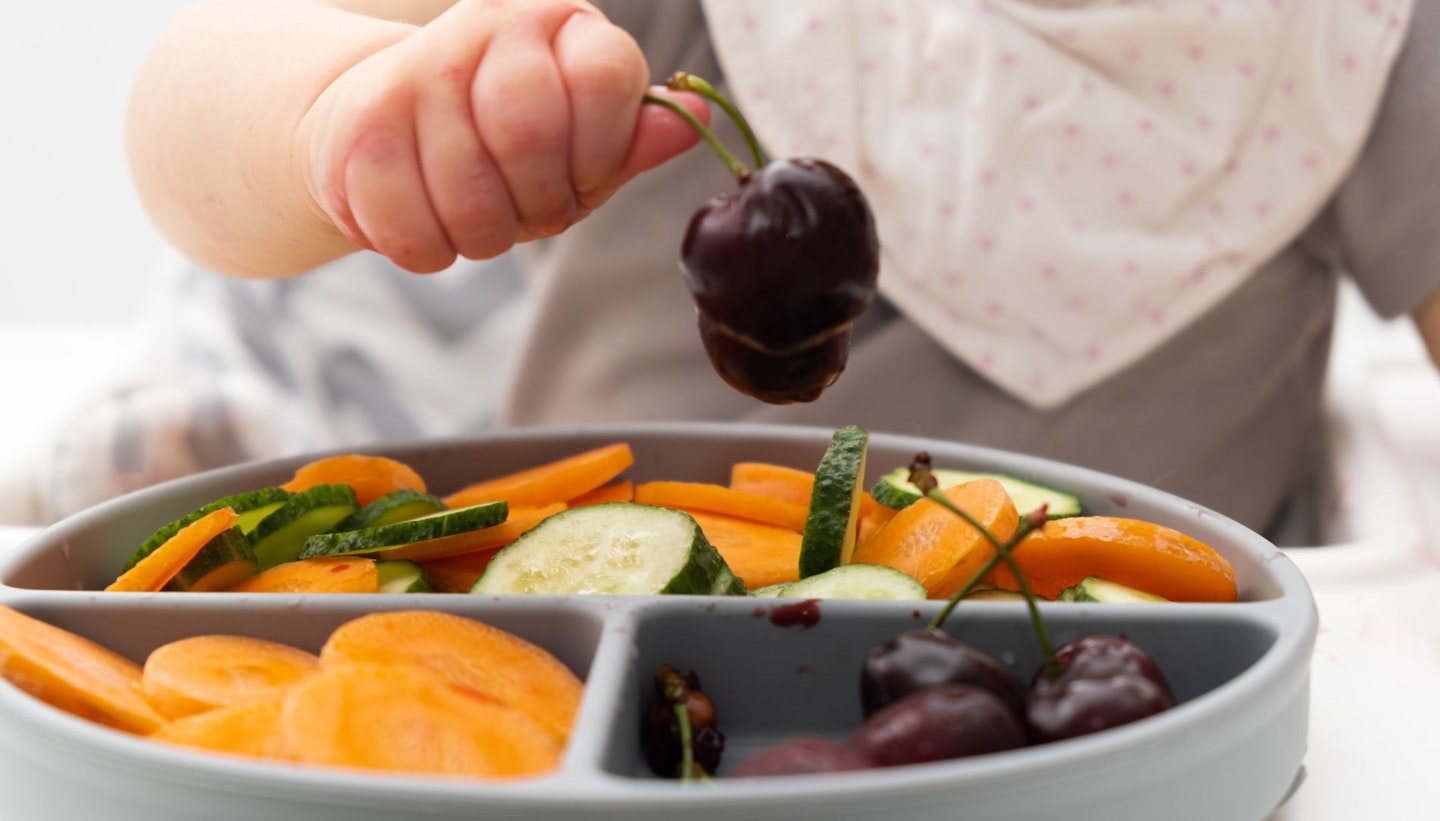
The benefits
Adventurous eater
Letting your baby make choices may lead her to be a more adventurous eater as they grow up and introducing texture straight away means they're less likely to be put off by lumps of food or different colours, shapes, smells, flavours and textures.
More sociable
As your baby is eating what everyone else is eating, they're more likely to eat with the rest of the family. Research shows that good eating habits are more likely to be formed when families eat together. This also means you'll be spending less money on milk formulas and pre-made baby purees as everyone will be tucking into the same foods!
It's natural
A baby's desire to explore is innate and it's how they learn. If you encourage little ones to use their hands, they are discovering different textures, as well as colours, smells and (hopefully!) taste. Plus, they are likely to have much more of a fun and enjoyable experience this way... they're only little once after all, so if you can't play with your food at that age, when can you?
The downsides
Adapting family meals
If you’re giving your baby the same food as the rest of your family, you need to make sure these meals are suitable. Babies shouldn’t be eating food with added sugar or salt, so no stock cubes (but you can introduce them to herbs and some spices). There are plenty of pre-made sugar-free baby foods out there for them to try if you want a night off cooking.
Time-consuming
It may take a while to make sure that everything is cooked perfectly and has the right consistency (and won't be a choking hazard). This method is based on your baby being the one in control, so you must let the mess happen! Before your baby is nine months old, it might be challenging for them to get the food into their mouth.
Baby gagging
It’s likely you’ll experience your baby choking or perhaps gagging, so learn what to do if this happens. To clear their airway you will need to put your baby face-down on your thigh. Whilst supporting their head, give them five back slaps between their shoulder blades with the heel of your hand. To try to avoid choking, make sure you don't give them suitable sized pieces and observe them whilst they're eating.

When to start baby-led weaning
You can start BLW from when your baby is 6 months old. They should be able to sit up in a high-chair unassisted and have good neck strength. Baby is ready when they are able to move food around their mouth with their jaw and tongue. Don't worry if they don't seem to be doing a chewing action yet - this might not happen until they reach 9 months.
It's also worth noting that your baby will still need their breast milk or formula when they're on solid foods and you should keep giving them milk alongside their food up to 10-12 months.
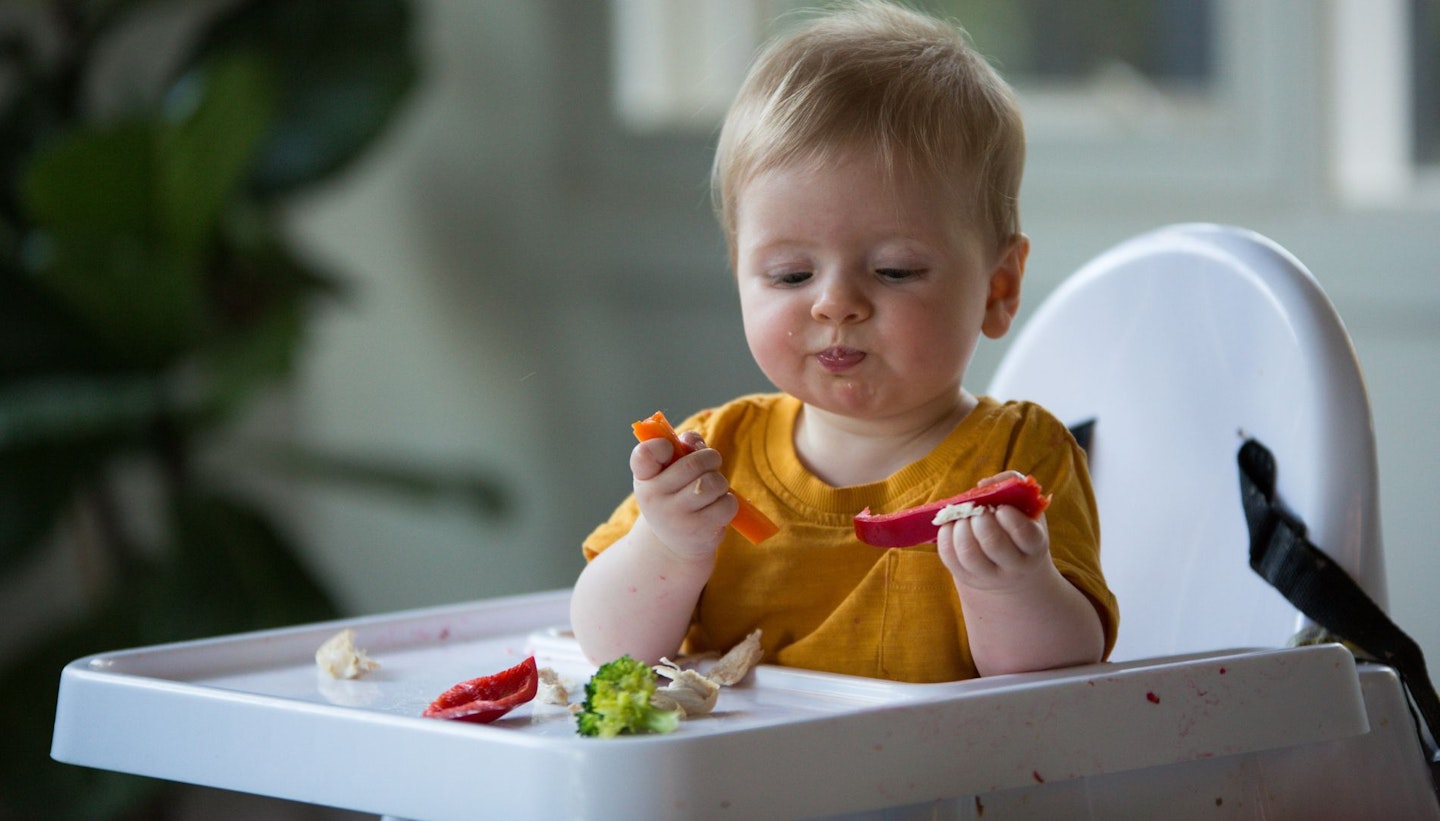
How to start baby-led weaning
• Put the food straight onto your baby’s tray. In a bowl, it’ll be catapulted across the room. You can find some useful weaning products at many retailers.
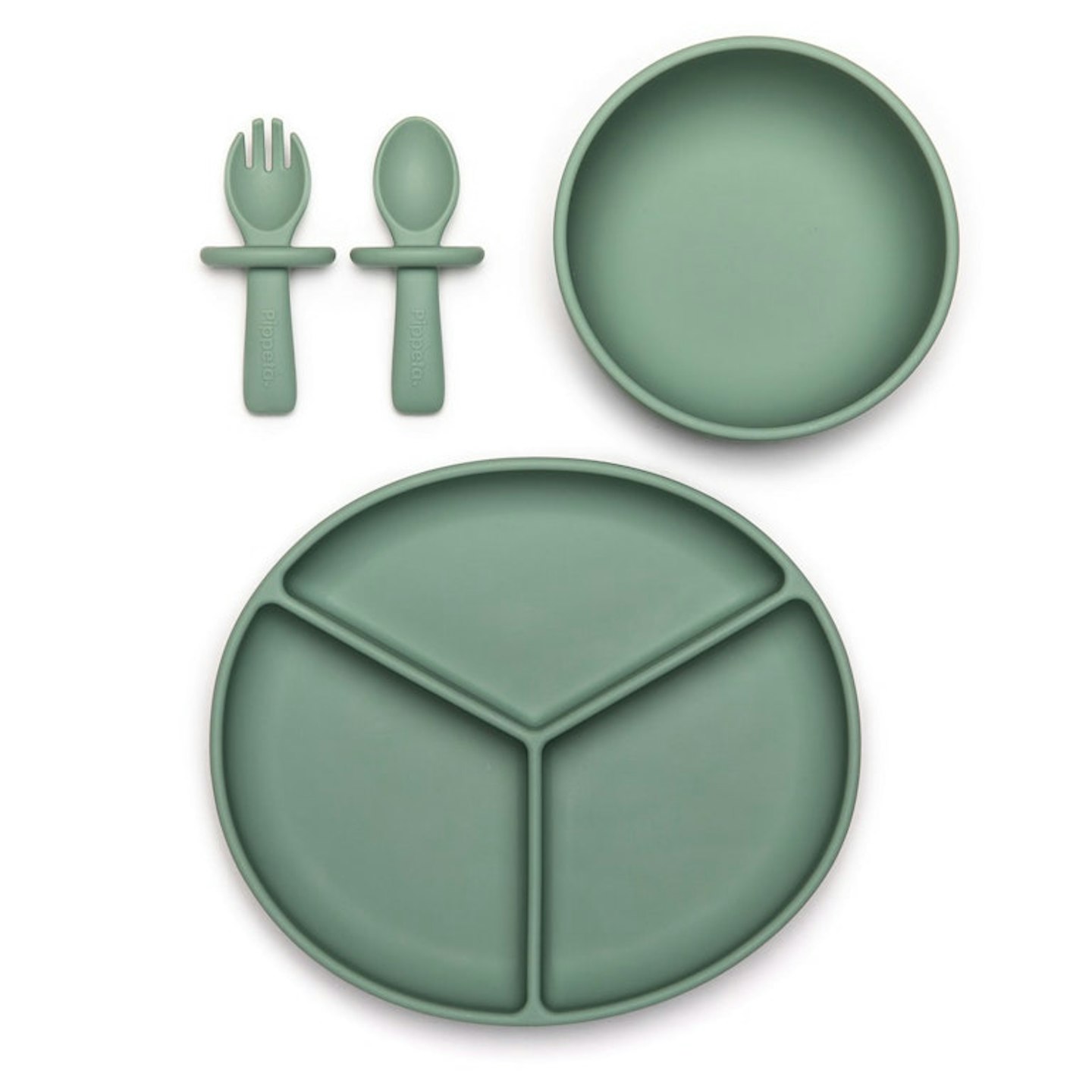
pippeta.com
Make your baby-led weaning journey easier with the right weaning essentials.
We absolutely love this Pippeta My 1st Weaning Set in meadow green—it's the perfect way to introduce your little one to cutlery and tableware. Designed to encourage self-feeding and exploration, this set supports independent eating from the very start.
The bundle takes the guesswork out of weaning, including everything you need: the Pippeta Section Suction Plate, Pippeta Suction Bowl, and Pippeta My 1st Spoon & Fork, all beautifully packaged in one box.
What we most love about this set is the suction plate because it feels sturdy, and the suction is so strong your little one won't even toss it on the floor, which is a huge win!

www.babybjorn.co.uk
We know that as parents, there’s already so much to think about, and figuring out what tools to use during weaning shouldn’t be another cause of stress. BabyBjörn has removed the guesswork with a thoughtfully designed set that covers everything you need, from cups and spoons to plates and bibs—all neatly packed in a lovely gift box.
This set is designed to make mealtime smoother and hopefully a bit less messy! BabyBjörn is known for its high-quality products, and this set ensures that the transition to self-feeding is easier for both parents and their little ones.
The set includes:
• A sturdy plate with a unique trefoil design, making it easier for babies to scoop food
• A divided plate with three compartments, perfect for offering snacks or keeping different food types separate
• Two easy-to-grip spoons
• Two forks designed specifically for small hands
• A stable, spill-resistant cup
• A soft, adjustable bib with a spill pocket to catch any little messes
Each item has been carefully designed to simplify mealtime for both parents and toddlers. The trefoil plate helps little ones learn to scoop food, while the divided plate keeps everything separated—ideal for picky eaters. The utensils are easy to grip, and the spill-resistant cup helps reduce mess. The bib is soft, adjustable, and has a pocket to catch crumbs. This all-in-one set removes the stress from the weaning process, making it easier for both you and your child to enjoy the journey. Definitely Mother&Baby approved!
• Don’t put too much in front of them. Two food items are enough.
• Cut food into chip-shaped pieces about the length of your finger. This is the easiest shape for them to pick up. The chips need to be long enough for your baby to grasp, with enough sticking out of their fist to eat.
• Use a crinkle cutter to chop the food. The crinkles make it easier to grip.
• Don’t put the food in your baby’s mouth – you must leave your baby in charge. ‘Don’t worry if they just seem to be playing with the food,’ says Rana. ‘Licking, smelling, mushing, holding – it’s all part of learning to eat.’
• Don’t feed food that’s known to be a choking hazard, such as whole olives, cherries or grapes.
• Be alert for gagging or choking. Because baby-led weaning food is lumpier from the get-go, you’re more likely to have to deal with this hazard. ‘When a baby gags, they're bringing the food from the back of their mouth to the front, so they can chew it,’ says Rana. ‘It’s usually quick and there’s usually a noise. Choking is much more serious. This is when food is blocking a baby’s windpipe – and it can be silent. Take a first-aid course and learn how to deal with choking at sja.org.uk before starting weaning.’
• Weaning can be messy, so it's worth investing in an overall bib to keep the cleanup easy.
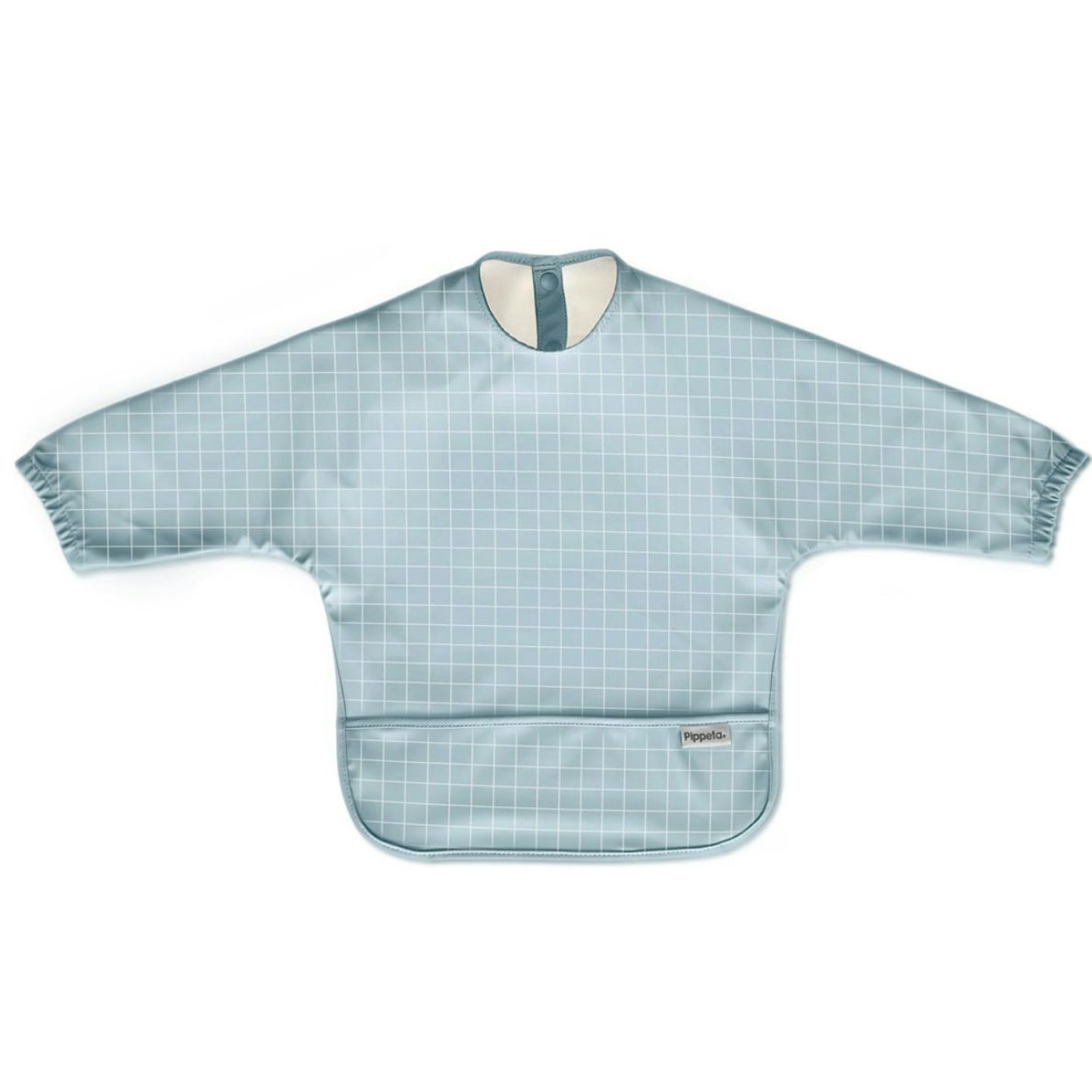
pippeta.com
If you've decided to wean your baby, be prepared for plenty of mess. However, you don't have to wash your baby's clothes 3 or 4 times a day with every meal. An overall bib can help reduce the headache of dealing with food stains.
The Pipetta Waterproof Cape Sleeved Bib is not only adorable but also practical. It gives you peace of mind, allowing your little one to explore and get messy while feeding. Made from recycled materials, it's easy to rinse and wipe clean, making it a convenient choice for weaning.

www.elodiedetails.com
If you're looking for a fuss-free, easy-to-snap-on bib that's cute, practical, and perfect for weaning on the go, we can't recommend the Elodie Baby Bib in Dalmatian Dots enough.
Honestly, it’s probably the cutest bib we've seen! The little bow tie detail instantly adds a touch of charm, making your tot look prim and proper—even in the middle of a mealtime mess. It’s perfect for eating out, special occasions, or just everyday use. Elodie is known for their playful and stylish designs, and this bib is no exception—it's as cute as it gets!
The velcro fastening makes it super easy to get on and off, and the soft, flexible material means you can fold it up and take it with you wherever you go. Plus, the quick-dry fabric means you don’t have to wait long before packing it away after use.
The bib’s wide size and stretchy material offer great coverage, keeping your baby or toddler’s clothes nice and clean during those messy mealtimes. The large front pocket is a game-changer for catching crumbs and spills—and it can even hold up to a full cup of liquid! It's practical, adorable, and convenient—perfect for busy parents on the move.
What we love most about this Baby Bib is the waterproof material, which makes it super easy to rinse or wipe clean after each use. And for those tougher stains, just pop it in the washing machine at 40 degrees. Plus, Elodie is all about sustainability, so this bib is free from phthalates and PVC—another reason to love this eco-friendly brand!
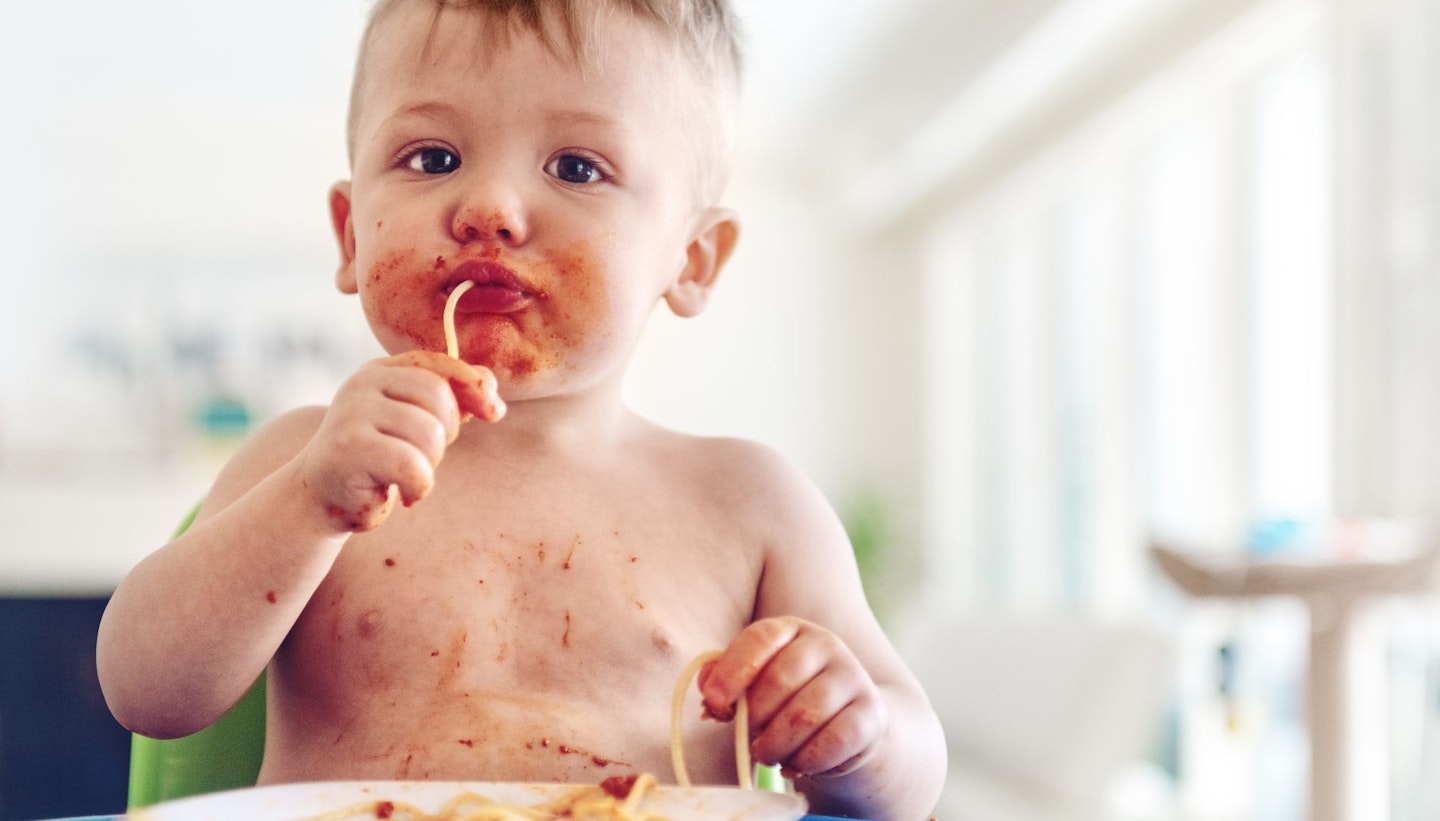
The best baby-led weaning foods by age
To start off your baby's baby-led weaning journey, the rule is to keep it simple. Try foods that are easy for them to pick up, and don't be tempted to over complicate with lots of flavours at once. Fruit and vegetables are a good place to start...
For babies 6-7 months
• Baby Rice: A popular first food for baby is baby rice which is easy to eat and swallow, has a neutral flavour and can be mixed with baby's milk so it's a familiar taste.
• Banana: half unpeel it to give your baby something to hold, along with easy access to the fruit.
• A piece of soft, cooked carrot: naturally sweet and full of vitamin A to strengthen your little one’s immune system.
• Steamed broccoli floret: most babies love the taste of broccoli and its stem provides a built-in ‘handle’.
• Slices of mozzarella cheese: Cheese provides an excellent source of calcium
• Mashed potato: Put a heaped spoon of soft mash or sweet potato mash in front of them.
• Avocado slices: Be sure to make these thick enough so baby can grip the pieces well.
• Hard boiled eggs: Slice into quarters for a tasty (but messy) breakfast.
• Toast soldiers: This is a great option for helping your tot to try new textures.
For babies 8-9 months
• Steamed baby sweetcorn: This is a great one for them to grab hold of and eat.
• Cucumber batons: These are also great at soothing sore gums.
• Unsalted rice cakes: Perfect for snacking on when out and about.
• Whole wheat pasta: Penne and fusilli works well for little hands.
• Blueberries and raspberries: Be sure to cut these in half for safe weaning.
• Steamed green beans: These are nice and long for holding onto.
• Minced chicken, turkey or beef: Small pieces of minced meat are safe for giving baby's as well as being full of protein.
• Small meatballs: These can be meaty or veggie, just make sure you slice them in half so baby can eat them more easily.
For babies 10-12 months
By this age, your baby should be able to eat whatever you're having, just as long as it is cut into bite-sized, easy to eat pieces to avoid choking. They may also enjoy things like...
• Hummus and pitta bread: Make sure you cut the pitta into nice, thin slices.
• Baked fish: Flake this into bite sized pieces for easy eating.
• Sweet potato wedges: Great for adding as a side dish for bigger appetites.
Safety tips to keep in mind with baby led weaning
If you're trying BLW with your baby, it's important you know the difference between gagging and choking.
Gagging is very normal for babies eating solids for the first time and is a natural gag reflex action when a piece of food isn't quite manageable for your baby's tiny mouth and throat. Signs of gagging include some coughing and spluttering, watery eyes and spitting out. Your baby will eventually learn what is manageable for them and what isn't food wise.
Choking on the other hand is when a piece of food gets lodged into baby's throat or windpipe and stops them from breathing. To reduce the risk of choking, always sit with your baby while they're eating, make sure they're always sitting up straight when eating and avoid giving them foods that are too hard. A lot of people don’t realise that with babies, bigger pieces of food are so much safer and easier to manage than little chunks, so bear this in mind when you're preparing the meals.
It's always useful to know first aid when you have a child.
Baby-led weaning feeding schedule samples
You may be wondering when's the best time to give your baby food to try, but it's important to know that you don't have to follow a set schedule. As eating solids is new to them, your little one may only want to take a few bites to begin with, but don't give up or lose hope. The more regularly foods are introduced, the more likely they may be inclined to try it. If one food doesn't seem to be working, try serving it with other foods, cooking it differently or swapping it for something a bit different and then reintroduce it at a later date.
Remember, you will be giving your baby these foods between bottle or breast feeds and naps, so you don't want to give them something immediately after, when they have a full stomach of milk. Below we've included an example of a schedule for the first few months of the weaning journey.
6-7 month sample schedule
07:00: Bottle or nurse
08:00: Breakfast (omelette strips)
08:40-10:40: Nap time
10:45: Bottle or nurse
12:10: Bottle or nurse
12:25-14:00: Nap time
15:00: Bottle or nurse
16:00-16:45: Power nap
17:00: Bottle or nurse
17:45: Dinner (Mashed potato and pureed beef mince)
18:45: Bottle or nurse
19:00: Bed

Expert tips for weaning on the go
Weaning on the go can be a challenge, but with some expert tips, you can make it easier for both you and your baby. Here are some useful suggestions.
1. Use a thermo flask
For families on the go, Charlotte Stirling-Reed recommends using a thermo flask to keep food hot or cold. These are especially helpful when you're weaning, as you can store purees or meals in smaller sizes that are easy to transport.
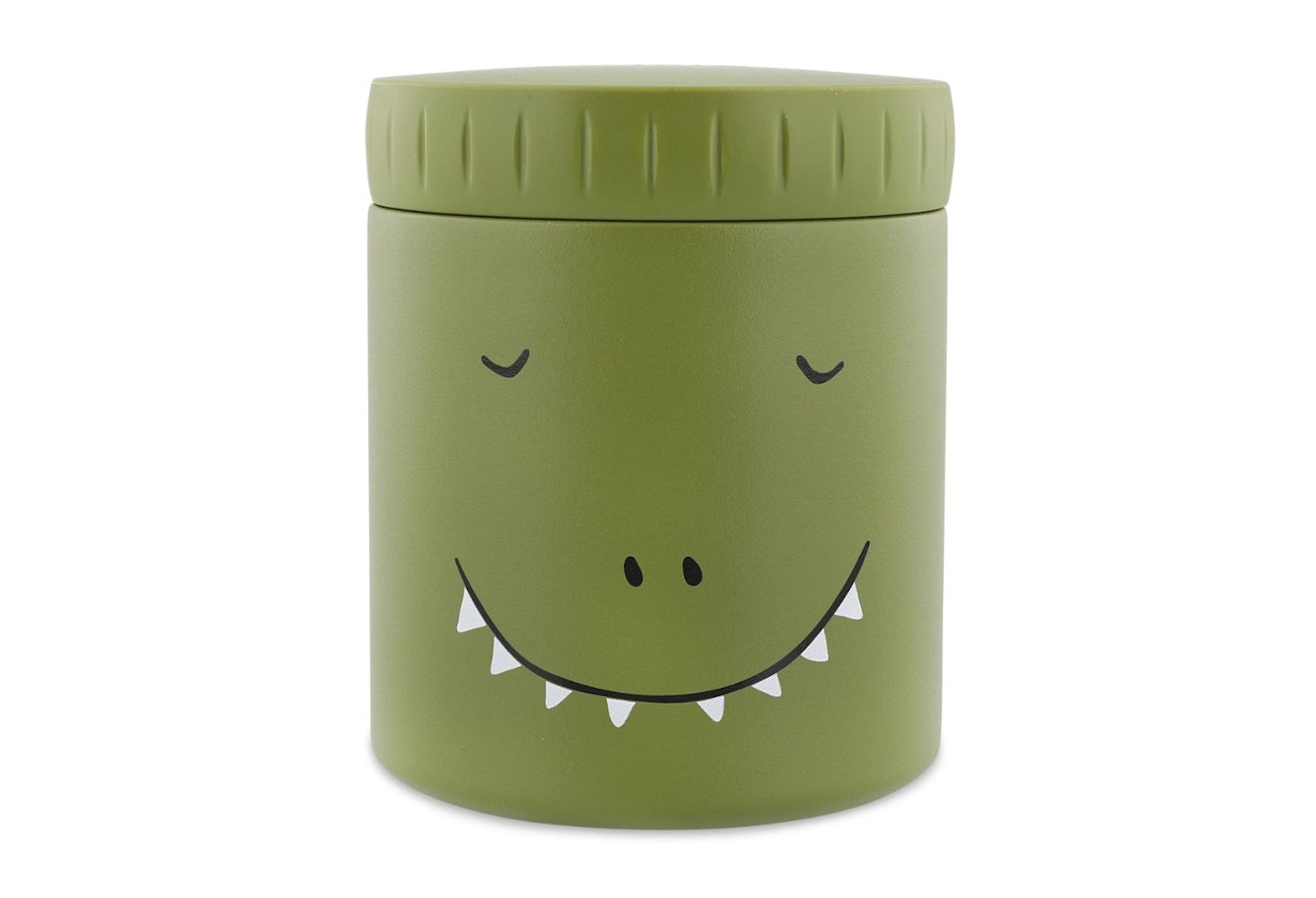
www.scandiborn.co.uk
We absolutely love the Trixie Insulated Food Jar 350ml - Mr. Dino from Scandiborn! It keeps food at the perfect temperature while you’re out and about, ensuring your little one’s meal stays fresh and delicious. We all know how frustrating it can be when food gets too cold, and babies lose their appetite because of the texture or temperature.
This jar is perfect for those chilly winter outings or just to keep food fresh for longer when you're on the move. The cleverly insulated, double-walled stainless steel design makes sure your food stays warm or cold, and it’s incredibly easy to open, lightweight to carry, and totally leakproof. Plus, it’s durable and made from food-safe stainless steel, giving you peace of mind wherever you go.
2. Opt for lock and stock boxes
Invest in a range of lock and stock boxes in different sizes. These are great for packing a variety of foods and can be mixed and matched to suit your needs. They’re easy to pack and great for keeping everything organised.
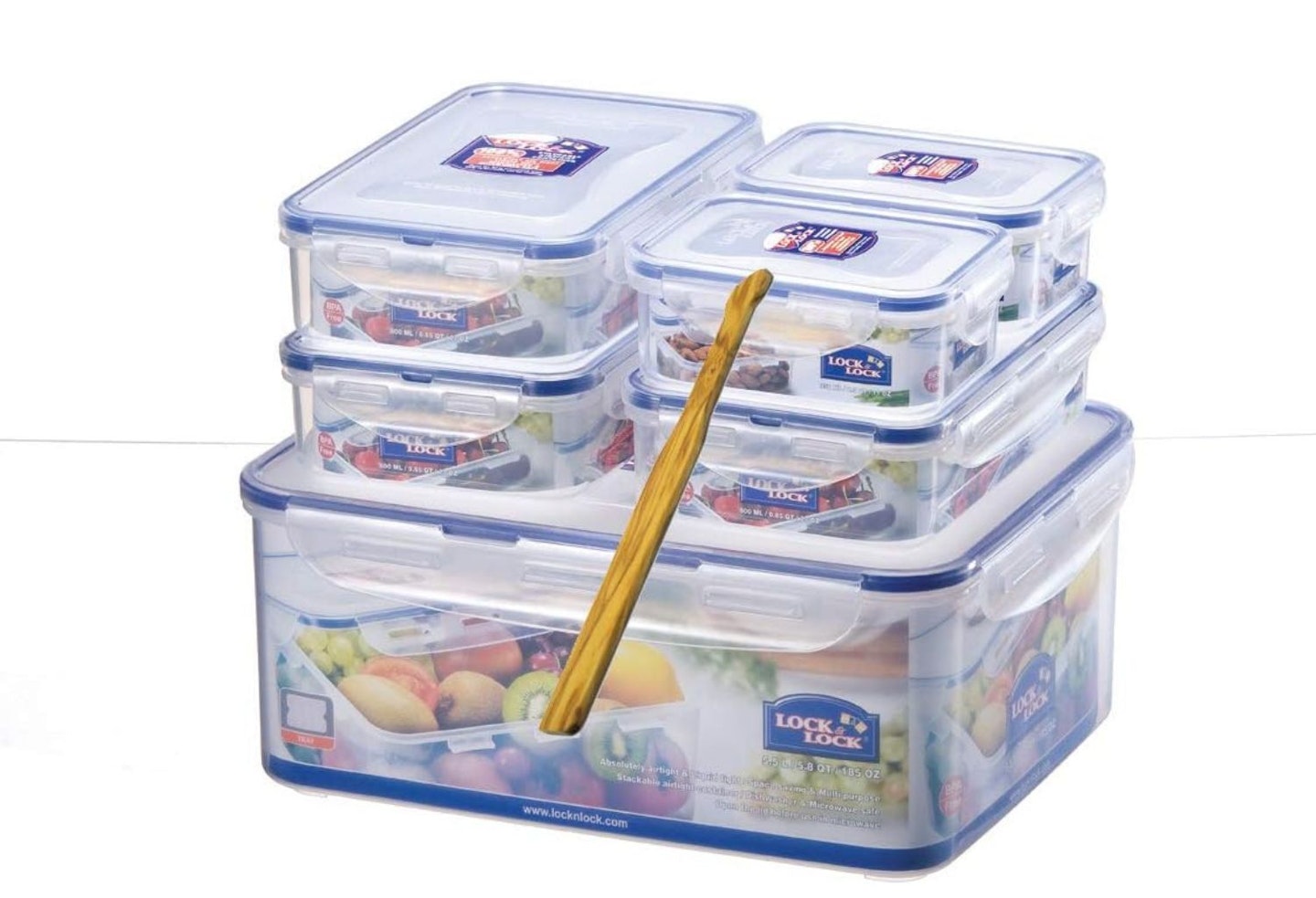
A reliable food container is a kitchen staple, and this LocknLock 6-Piece Container Set is definitely worth having on hand. With a 5.5L rectangular container and 3 x 800ml and 2 x 350ml smaller containers, this set is ideal for meal prepping, storing leftovers, or organizing your pantry. The four-sided lockable lid ensures it's 100% airtight and leak-proof, keeping food fresh for longer. Plus, it's BPA-free, freezer-safe, microwave-safe (top rack only), and dishwasher-safe, making it super convenient and easy to clean.
3. Cool bags for temperature control
Charlotte also recommends having a cool bag with a cool pack is essential for keeping food at the right temperature for a few hours, especially when you’re out for longer periods. This ensures that your baby’s food stays fresh and safe to eat.
4. Reusable wipes
Charlotte suggests using “cheeky wipes” or other reusable face wipes. They're environmentally friendly, easy to carry, and perfect for cleaning little hands and faces while out and about.

As a parent, we know how important it is to be conscious of the environment, especially when it comes to weaning. The pile of wet wipes used for cleaning can really make you feel guilty. This Cheeky Wipes Reusable Mini Wash Kit—it’s not only cost-effective but also planet-friendly. This kit includes 25 washable cotton terry wipes, a waterproof travel bag, a fresh soaking box, and an essential oil solution.
These wipes are perfect for on-the-go cleaning, and they wash well and dry super quickly, making them easy to use over and over again. (Just a heads-up: they might shrink a little on the first wash, but that’s totally normal!) You can machine wash them at 40°C, and they’re ready to go in no time.
5. Keep it simple
Don't stress if you don't have all the equipment with you. Charlotte reminds parents that "sometimes all you need is a banana!" The key is to keep things simple and not overcomplicate weaning when you’re out on the go.
6. Pack a variety of foods
Having a few options helps in case your baby is in the mood for something different. Consider small portions of fruits, veggie sticks, or finger foods that are easy for your baby to handle.
7. Plan ahead for mealtime
Whenever possible, plan meals and snacks ahead of time, so you’re not scrambling for food while you're out. This includes pre-portioned snacks or meal jars that can be easily heated or served cold.
Meet the experts
Charlotte Stirling-Reed is “The Baby & Child Nutritionist” and is a Registered Nutritionist with the Association for Nutrition. Charlotte is also an author and mum to little foodies Raffy and Adaline, and owner of consultancy, SR Nutrition. It’s her mission in her work to give parents confidence in feeding their children.
Dr Rana Conway, a nutritionist and author of Weaning Made Easy about baby-led weaning.
About the author
Anne Lora Scagliusi is a Senior Digital Writer at Mother & Baby. She is a Scotland-based journalist with over a decade of international writing experience, specialising in women’s health, maternal mental health, and wellness. Her work has been featured in Vanity Fair, Marie Claire, and Glamour and has appeared on several Vogue global editions. She is mum to a one-year-old bambino and lives between Italy and the UK. You can follow her on Instagram.
